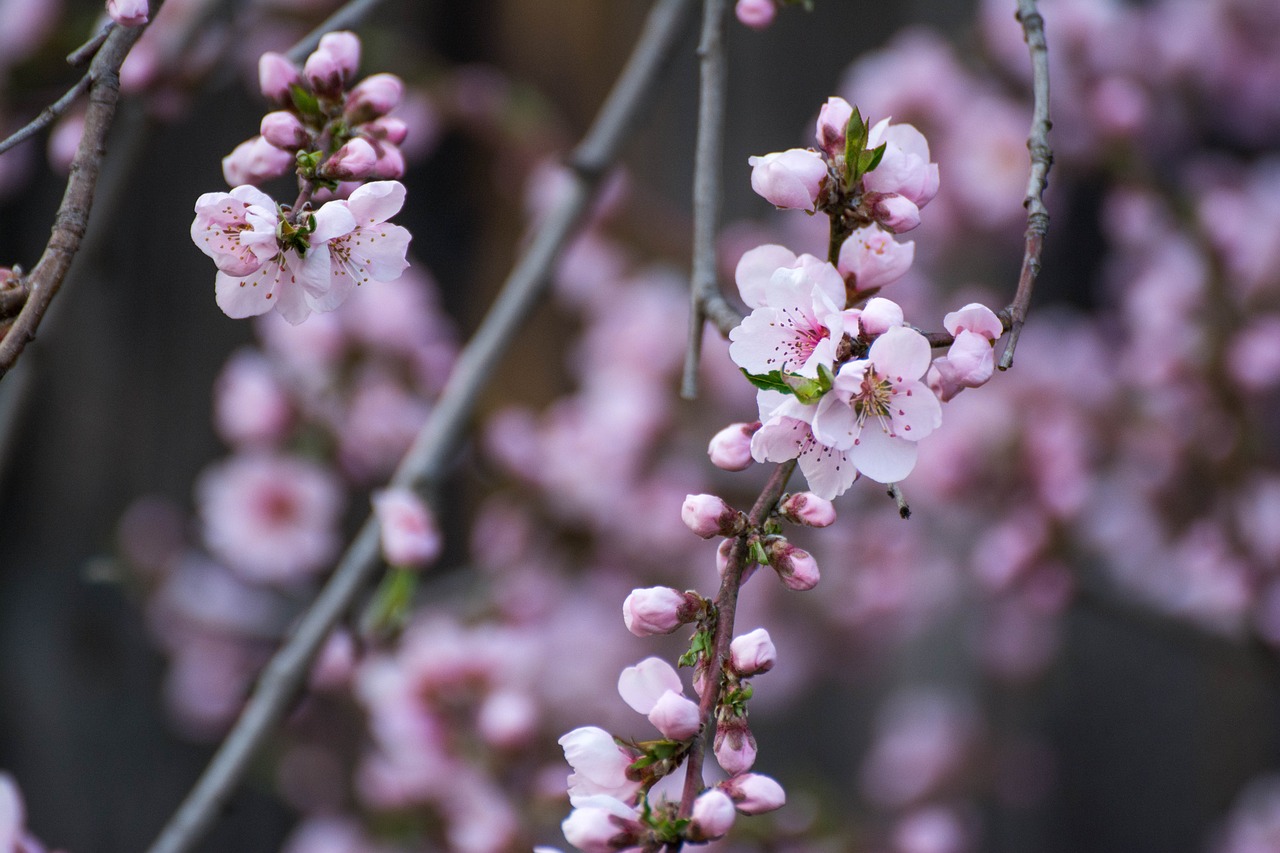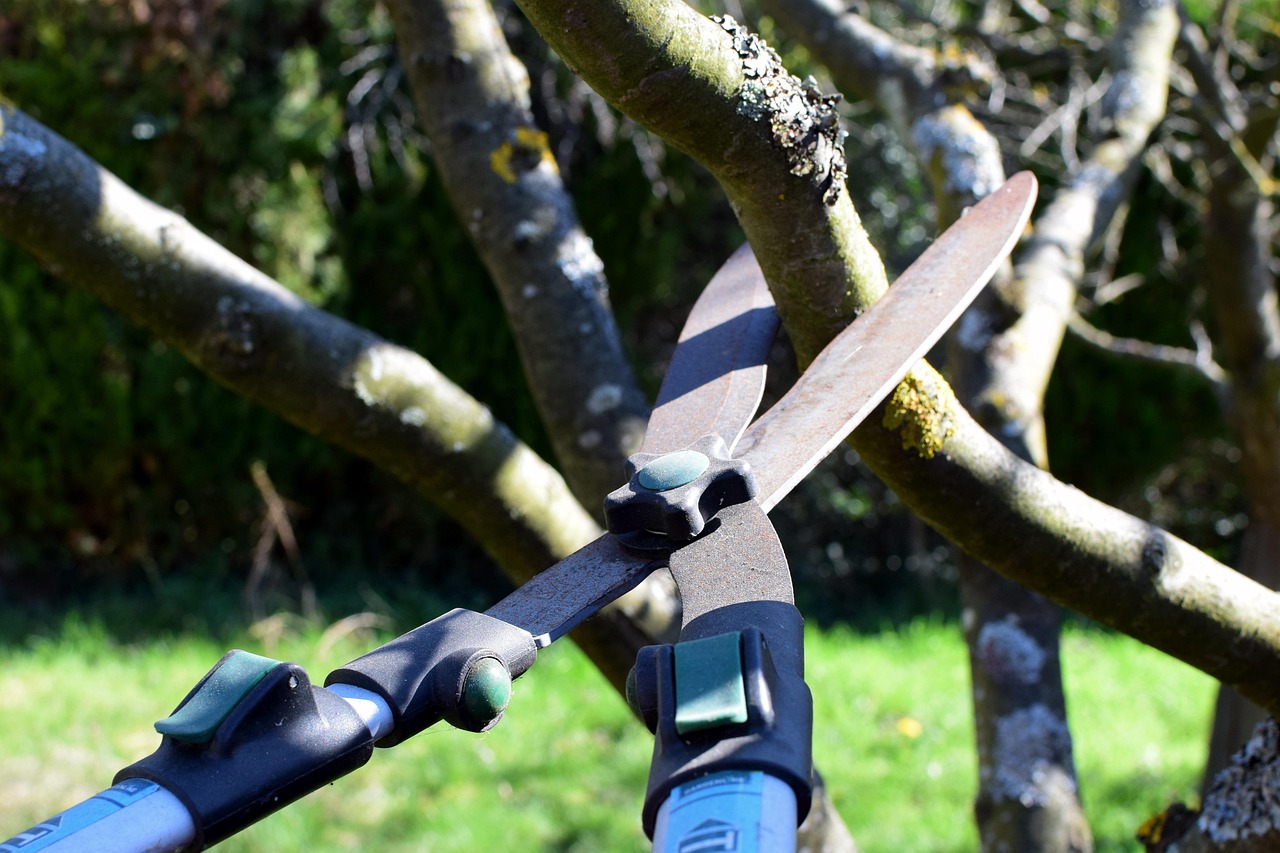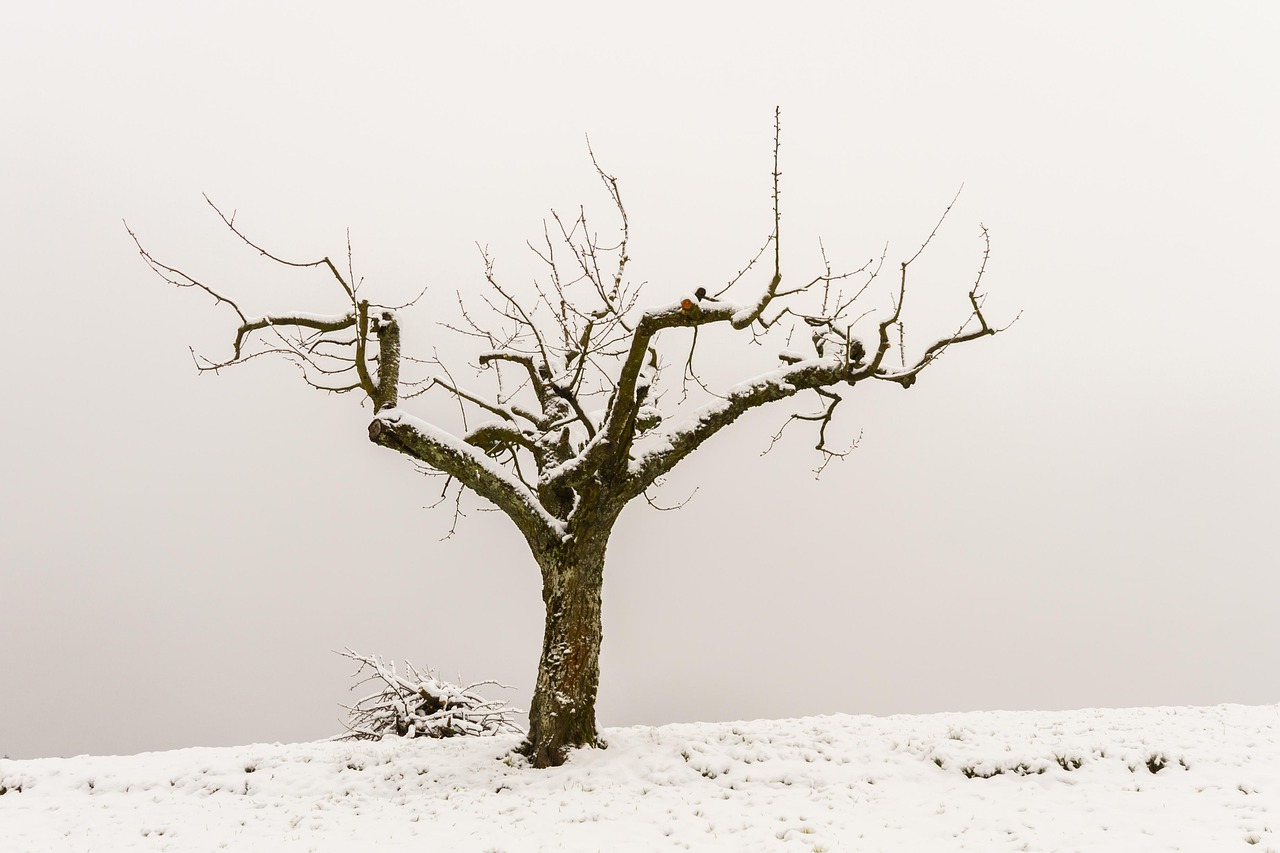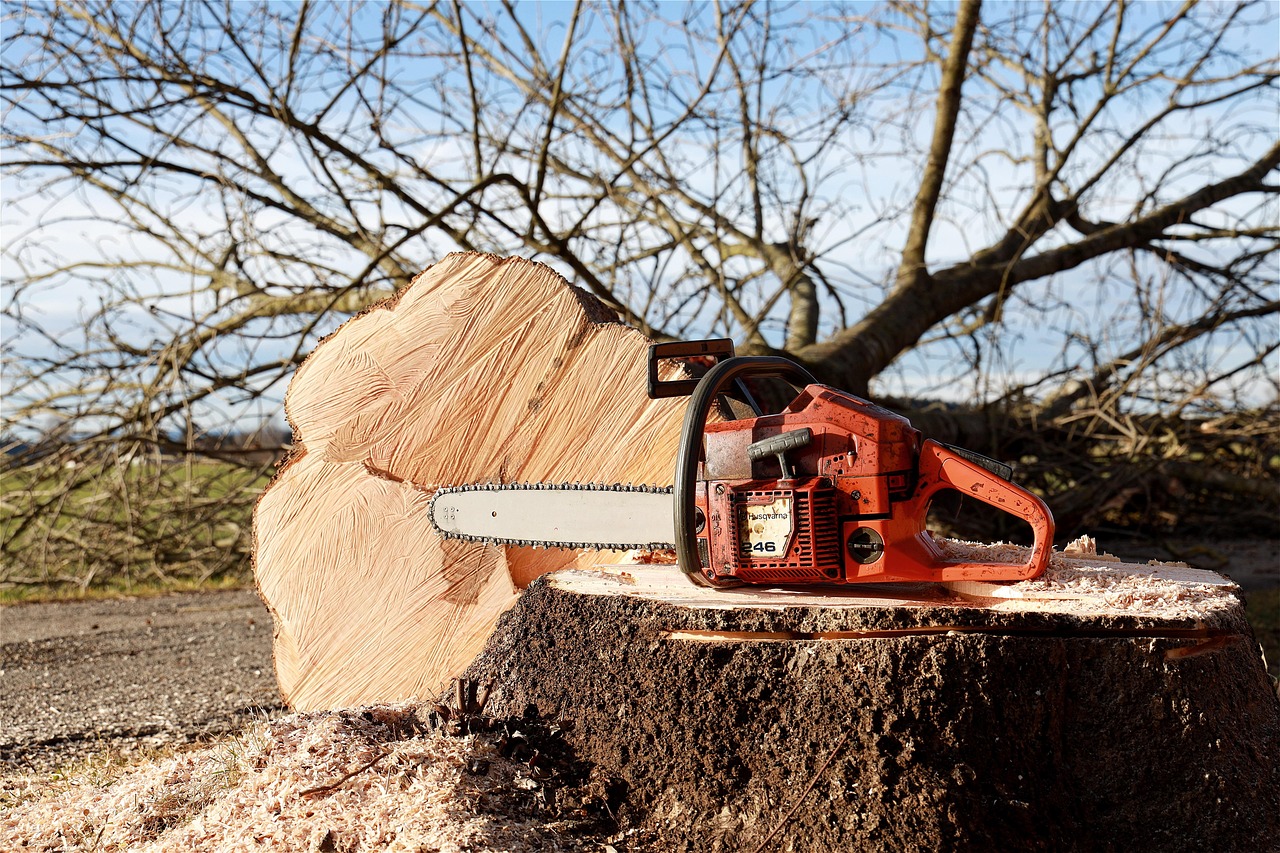Nectarine tree pruning is essential for improving growth and fruit quality. Proper techniques include thinning, heading cuts, and training young trees. These methods enhance sunlight penetration, air circulation, and overall tree health, leading to a more productive harvest.
Nectarine trees are a popular choice for home gardens and orchards. They produce juicy, sweet fruits that are enjoyed fresh or in various culinary dishes. However, to achieve optimal growth and fruit production, regular pruning is key. Pruning not only shapes the tree but also encourages healthy growth and reduces the risk of diseases.

Understanding the growth habits of nectarines is crucial before diving into pruning techniques. Nectarine trees typically grow in a vase shape, allowing sunlight to reach the inner branches. This shape is essential for producing high-quality fruit. However, without proper pruning, the tree can become overgrown, leading to poor air circulation and reduced fruit yield.
| Pruning Method | Description | Benefits |
|---|---|---|
| Thinning | Removing excess branches to improve airflow. | Reduces disease risk and improves fruit size. |
| Heading Cuts | Shortening branches to promote new growth. | Encourages bushier growth and more fruiting wood. |
| Summer Pruning | Trimming during the growing season. | Helps control tree size and shape. |
Understanding Nectarine Tree Growth
Nectarine trees thrive best in well-drained soil with plenty of sunlight. They require a warm climate to produce sweet fruits. These trees typically grow to about 15-25 feet in height, depending on the variety and growing conditions. They also have a relatively short lifespan compared to other fruit trees, averaging around 15-20 years.
One characteristic of nectarines is their smooth skin, which differentiates them from peaches. This unique trait requires specific care during pruning to avoid damaging the tree’s bark. Understanding the tree’s natural structure will help guide your pruning decisions throughout its life.

Timing Your Pruning
The timing of pruning is as important as the methods used. Generally, nectarines should be pruned during late winter or early spring when the tree is still dormant. This timing minimizes stress on the tree while promoting vigorous growth in the following season. Summer pruning can also be beneficial for controlling growth and improving sunlight exposure on fruit-bearing branches.
Pruning during dormancy allows gardeners to assess the tree’s structure clearly. It is easier to identify dead or diseased wood at this time. Additionally, pruning during dormancy encourages new growth as temperatures warm up in spring. On the other hand, summer pruning helps maintain shape without encouraging excessive vegetative growth.
Essential Pruning Techniques
There are several techniques that can be applied when pruning nectarines. Each method serves a specific purpose and contributes to the overall health of the tree.

Thinning Branches
Thinning involves selectively removing branches to improve air circulation and sunlight penetration. This technique is particularly important for preventing fungal diseases that thrive in shaded areas. When thinning, focus on removing branches that cross or rub against each other, as well as those that grow inward towards the center of the tree.
Making Heading Cuts
Heading cuts are used to shorten branches and encourage bushier growth. By cutting back a branch to just above a bud, you stimulate new growth from that bud. This method is especially effective in encouraging fruit-bearing wood in young trees. Be cautious not to remove too much foliage at once, as this can stress the tree.
Training Young Trees
Training young nectarines involves establishing a strong framework for future growth. This often includes selecting a central leader and removing competing stems. The goal is to create an open structure that allows sunlight to penetrate while maintaining strength and stability within the tree.

Tools for Pruning Nectarine Trees
Using the right tools can make pruning more efficient and effective. Here are some essential tools every gardener should have:
- Pruning Shears: Ideal for cutting small branches and making precise cuts.
- Loppers: Useful for thicker branches that cannot be managed with shears.
- Saw: Necessary for larger limbs that need removal.
- Gloves: Protect hands from thorns and sharp edges.
Maintaining these tools ensures clean cuts that heal quickly. Clean cuts reduce the risk of diseases entering through damaged bark. Always disinfect tools between cuts, especially when working with multiple trees.
Advanced Pruning Techniques for Nectarine Trees
Once you have mastered the basic pruning methods, you can explore advanced techniques that can further enhance the growth and productivity of your nectarine trees. These methods require a deeper understanding of tree biology and growth patterns but can lead to impressive results.
Renewal Pruning
Renewal pruning is a technique focused on rejuvenating older nectarines that have become less productive over time. This method involves selectively cutting back older branches to encourage new growth. Here’s how to effectively perform renewal pruning:
- Identify branches that are more than three years old and show signs of reduced fruit production.
- Cut these branches back to a healthy bud or lateral branch to promote new shoot development.
- Maintain a balance between old and new wood to ensure continued fruit production.
This method not only revitalizes the tree but also helps in maintaining its overall size and shape. It is best performed during the late winter months when the tree is dormant.
Espalier Techniques
Espalier is a method of training trees to grow flat against a trellis or wall. This technique is particularly useful in small gardens where space is limited. To create an espaliered nectarine tree, follow these steps:
- Select a Suitable Variety: Choose a variety that can handle being trained, such as a dwarf or semi-dwarf nectarine.
- Prepare the Structure: Install a sturdy trellis or frame before planting the tree.
- Start Training Early: As the tree grows, gently tie branches to the trellis in desired positions.
- Prune Regularly: Maintain shape through regular pruning, removing unwanted shoots and encouraging lateral growth.
Espaliered nectarines not only save space but also allow for easier harvesting and improved sunlight exposure for all parts of the tree.
Common Pruning Mistakes to Avoid
Many gardeners make common mistakes when pruning nectarines that can hinder tree health and fruit production. Being aware of these pitfalls can help ensure successful pruning sessions.
- Over-pruning: Removing too much foliage can stress the tree. Always follow the one-third rule, where no more than one-third of the tree’s total branches are removed in a single season.
- Ignoring Tree Structure: Failing to consider the natural shape of the tree can lead to poor air circulation and sunlight exposure. Always aim to maintain an open center.
- Neglecting Clean Tools: Using dirty tools can introduce diseases to the tree. Ensure tools are cleaned and disinfected before starting each pruning session.
- Pruning at the Wrong Time: Pruning at the wrong time of year can lead to excessive sap loss or damage to new buds. Stick to late winter or early spring for major pruning tasks.
Signs Your Nectarine Tree Needs Pruning
Recognizing when to prune your nectarine tree is crucial for maintaining its health and productivity. Here are some signs that indicate it is time to prune:
- Excessive Crowding: If branches are crossing or overcrowded, it’s essential to thin them out.
- Poor Fruit Production: A noticeable decrease in fruit yield may indicate that the tree needs rejuvenation through pruning.
- Diseased or Damaged Branches: Remove any branches that show signs of disease or damage immediately to prevent spread.
- Weak Growth: If new growth appears weak or spindly, it may be time to prune for better air circulation and light exposure.
The Benefits of Proper Pruning
Engaging in proper pruning techniques has numerous benefits for nectarine trees. These advantages go beyond just aesthetics; they significantly enhance tree health and productivity:
- Improved Airflow: Reducing overcrowded branches enhances airflow, minimizing the risk of fungal diseases.
- Better Sunlight Exposure: An open structure ensures that all parts of the tree receive adequate sunlight, promoting better fruit quality.
- Easier Harvesting: A well-pruned tree allows for easier access to fruit, making harvesting less labor-intensive.
- Stronger Branches: Regular pruning encourages the development of sturdy branches that can support heavier fruit loads.
With consistent care and attention to pruning techniques, your nectarine trees can thrive, providing bountiful harvests year after year. Understanding the unique requirements of nectarines will empower you to create a healthy orchard that yields delicious fruits.
Seasonal Care for Nectarine Trees
Beyond pruning, seasonal care plays a vital role in the overall health and productivity of your nectarine trees. Each season brings specific tasks that can enhance growth, improve fruit quality, and prepare the tree for the next cycle. Understanding these seasonal needs will help you manage your orchard effectively.
Spring Care
Spring is a critical time for nectarines as the trees awaken from dormancy. Proper care during this season sets the stage for successful growth and fruiting. Here are essential tasks to focus on:
- Fertilization: Apply a balanced fertilizer in early spring to provide necessary nutrients. A formula rich in nitrogen, phosphorus, and potassium is ideal.
- Pruning: Continue any final pruning as buds begin to swell, ensuring that you avoid cutting new growth.
- Pest Management: Monitor for pests like aphids and peach tree borers. Early intervention can prevent infestations.
- Watering: As temperatures rise, ensure the tree receives adequate water, especially during dry spells.
These activities will stimulate healthy growth and prepare your nectarine trees for fruit production.
Summer Care
During summer, the focus shifts to maintaining tree health and managing fruit development. Here are some key summer care practices:
- Thinning Fruits: If your tree has set an excessive amount of fruit, consider thinning them to enhance size and quality. Aim to leave about 6 to 8 inches between fruits.
- Regular Watering: Ensure that the trees receive consistent moisture, especially during hot weather. Deep watering encourages deeper root growth.
- Pest Control: Keep an eye out for pests like spider mites and fruit flies. Use organic pesticides as needed while avoiding harm to beneficial insects.
- Mulching: Apply mulch around the base of the tree to retain soil moisture and suppress weeds.
Summer care is essential for ensuring that the tree remains healthy and productive as it develops fruit.
Fall Care
As summer transitions into fall, it is crucial to prepare your nectarine trees for the upcoming winter months. Here are essential fall care tasks:
- Final Harvest: Collect all ripe fruits before the first frost. Leaving overripe fruit on the tree can attract pests.
- Post-Harvest Pruning: Consider light pruning to remove any dead or damaged branches after the harvest.
- Soil Preparation: Test soil pH and amend as necessary with lime or sulfur to maintain optimal conditions for next year’s growth.
- Winter Protection: Consider wrapping the trunk with burlap or protective materials to shield it from cold temperatures and rodents.
These practices will help fortify your trees against winter challenges and prepare them for a new growing season.
Winter Care
Winter is primarily a dormant period for nectarine trees, but there are still important tasks to keep in mind:
- Pruning: This is the best time for major pruning tasks. Remove any dead or diseased wood, and shape the tree as needed.
- Monitoring for Diseases: Inspect trees for signs of disease or pests during warmer winter days. Early detection is critical.
- Irrigation Planning: If your region experiences dry winters, consider deep watering during warmer spells to keep roots hydrated.
Providing winter care ensures that trees remain healthy and ready for vigorous growth when spring arrives.
Nutritional Needs of Nectarine Trees
Nutritional needs play a significant role in the health and productivity of nectarine trees. A well-balanced fertilization strategy supports growth, flowering, and fruiting. Understanding the specific nutrient requirements can aid in selecting the right fertilizer.
| Nutrient | Function | Sources |
|---|---|---|
| Nitrogen | Promotes leaf growth and overall vigor. | Blood meal, fish emulsion, or organic compost. |
| Phosphorus | Supports root development and flowering. | Bone meal or rock phosphate. |
| Potassium | Aids in fruit quality and disease resistance. | Potasium sulfate or greensand. |
| Calcium | Strengthens cell walls and promotes fruit firmness. | Lime or gypsum. |
| Magnesium | Important for photosynthesis and overall health. | Epsom salts or dolomitic lime. |
The right balance of these nutrients will support healthy foliage, robust growth, and high-quality fruit production. Regular soil testing can help determine nutrient deficiencies and guide fertilization practices.
Pest and Disease Management
Pest and disease issues can significantly impact the health of nectarines. Identifying potential threats early is crucial for effective management. Here are some common pests and diseases along with management strategies:
Pests
- Aphids: These small insects can cause leaf curling and stunted growth. Use insecticidal soap or introduce beneficial insects like ladybugs.
- Pear Slug: This pest feeds on leaves, creating holes. Handpicking or using neem oil can help control their numbers.
- Twig Borers: These pests bore into branches, causing dieback. Prune affected branches and monitor for signs of infestation.
Diseases
- Curl Leaf: A fungal disease causing leaves to curl and become distorted. Preventative measures include proper pruning for air circulation and applying fungicides if necessary.
- Bacterial Canker: This disease can kill branches and cause gumming. Prune away affected areas and maintain tree health to prevent outbreaks.
- Powdery Mildew: A white fungal growth on leaves that can weaken trees. Apply sulfur-based fungicides at the first sign of infection.
A proactive approach to pest and disease management will protect your nectarine trees from potential threats while ensuring a healthy growing environment.
Maintaining Your Nectarine Orchard
To achieve optimal health and productivity in your nectarine trees, ongoing maintenance beyond pruning is essential. This includes regular monitoring, seasonal adjustments, and soil care. Each of these components plays a crucial role in supporting your trees throughout their lifecycle.
Regular Monitoring
Continuous observation of your nectarine trees can help identify issues early, allowing for prompt action. Here are some key aspects to monitor:
- Growth Patterns: Keep an eye on tree growth each season. Stunted or weak growth may indicate nutrient deficiencies or root problems.
- Leaf Health: Watch for discoloration or unusual leaf shapes, which could signal nutrient issues or diseases.
- Fruit Development: Monitor fruit size and quality as they develop. Poor fruit quality may result from inadequate care or pest infestations.
A regular inspection schedule will help you stay ahead of potential problems and maintain a healthy orchard.
Soil Health and Management
The health of your soil directly impacts the health of your nectarine trees. Here are essential practices for maintaining soil health:
- Soil Testing: Conduct soil tests every few years to assess pH levels and nutrient content. This information helps guide your fertilization strategy.
- Organic Matter Addition: Incorporate organic matter such as compost or well-rotted manure to improve soil structure and fertility.
- Crop Rotation: If you are growing other crops alongside nectarines, practice crop rotation to prevent nutrient depletion and reduce pest pressure.
Healthy soil will provide a robust foundation for your nectarine trees, ensuring they receive the nutrients they need to thrive.
Irrigation Practices
Irrigation is another critical factor in maintaining healthy nectarine trees. Proper watering practices lead to better fruit quality and tree health. Consider the following tips:
- Deep Watering: Water deeply and less frequently to encourage deep root growth. This practice helps trees withstand drought conditions.
- Mulching: Apply mulch around the base of the tree to retain moisture and suppress weeds.
- Irrigation Schedule: Establish a consistent watering schedule based on seasonal needs, rainfall, and soil type.
Effective irrigation management will help keep your nectarine trees hydrated and support their growth.
Final Thoughts
Caring for nectarines requires a comprehensive approach that includes proper pruning, seasonal maintenance, pest management, and attention to soil health. By implementing the techniques outlined in this article, gardeners can enhance the growth and productivity of their nectarine trees significantly.
Regular pruning not only shapes the tree but also promotes healthier growth and improved fruit quality. Seasonal care tasks ensure that trees are adequately nourished and protected from pests and diseases. Additionally, maintaining soil health through organic amendments and proper irrigation practices creates a thriving environment for your trees.
As you cultivate your nectarine orchard, remember that patience and observation are key. Each tree is unique, and understanding its specific needs will lead to a successful harvest year after year. By embracing these practices, you can enjoy bountiful yields of delicious nectarines while fostering a healthy garden ecosystem.
With dedication and care, your nectarine trees can flourish, providing you with sweet rewards that will delight your family and friends. Happy gardening!
